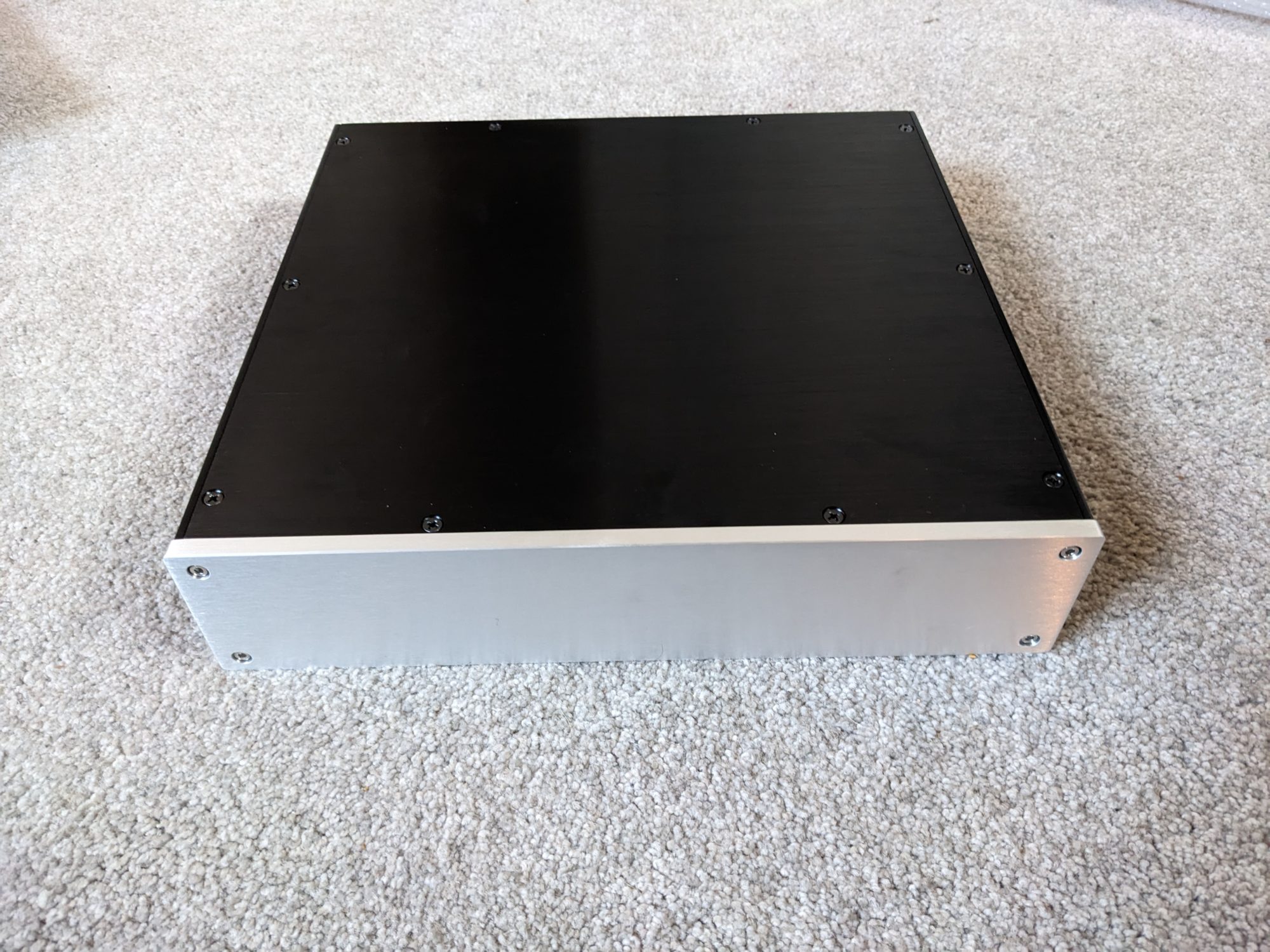I just received the case that I will be using as the back bone of the project. It is a blank case with no cut outs for the back panel or holes for mounting feet. I will be replacing the front panel with the custom one I design as well as adding the custom feet, knobs and outputs that the amplifier need. All of the circuitry will also have to have custom mounting because it will be comprised of about 5 different boards, each of which have a specific function.



Constraints:
Size and dimension of the front panel.
Bolt holes to mount to the rest of the case.
Size of the back panel for inputs.
Size and layout of the circuits that go into the amplifier.
Height of the case.
The biggest constraint is the shape of the front panel and the holes that bolt it to the rest of the case. I tried to find the dimensions online, but there was nothing available, so I will have to measure the holes with calipers and hope that is close enough for the case to fit together well in the end. From measuring the case, the panel will be 319mm x 70mm with the current thickness being 8mm. Because I want the final case to look and feel high end, I will be increasing the 8mm thickness to about 13mm or .5 inches. Another constraint will be the layout of the rear inputs. The amplifier will have four channels, a power connector and two XLR connectors which all need to fit into the provided space while still being clear and organized for the user to organize the cables. Since so many different boards are going into the amplifier, there is very limited space inside for everything to be neatly organized inside. Somethings need to be in certain locations, like the input selection circuit, and the transformer. So the other boards will have to fit around those. The last constraint is the height of the case. The case is about 2U tall (two rack mount units) which is 3.5″ so none of the components inside can be taller than that. Some capacitors can be quite large, so that will have to be though of when selecting the parts.
Specifications:
Input selector and volume knob functionality
Number of inputs
Controls and outputs on the front panel
Aesthetic to match what I originally proposed while also fitting in with other audio equipment
Size and standards of the outputs
First and foremost, the function of the amplifier must be decided.
At the very least it needs a volume knob, a power switch/button, and in this case a headphone output jack. I worked with my dad to determine the functionality of the amp, and he wanted something that has multiple inputs because there are multiple sources the music can come from ranging including a CD player, a streaming device like an iPad and a turn table. We decided on something that has 4 inputs in case he wants to add another device in the future. In an earlier post I talked about my aesthetic being swiss watch with a mechanical style and fasteners that would be found on a watch. When designing the case, I kept this in mind while also making sure it wasn’t too out there and flashy because ultimately it will be part of a rack of stereo stuff that my dad has, and I didn’t want it to take away from other things. In the end, I am happy with the design I came up with and think it will incorporate nicely with the other equipment. The last specification was the type of interfaces. For the headphone jack there are three standard sizes, 3.5 mm and 1/4″. I decided to go with 1/4″ because it is a more robust connector and also more common in audiophile headphones.




1 Comment. Leave new
Very cool project Cameron, seems ambitious! Do you have an idea yet of where you will be getting all of the boards and other electrical components for the insides? Are you stripping old amplifiers, buying parts, or building boards/components? From the excessive weight of vintage amplifiers and their expansive size I imagine there is a lot more going on inside than just amplification, are you going to try and achieve a really high quality sound with some sort of signal processing? Excited to see how it turns out!